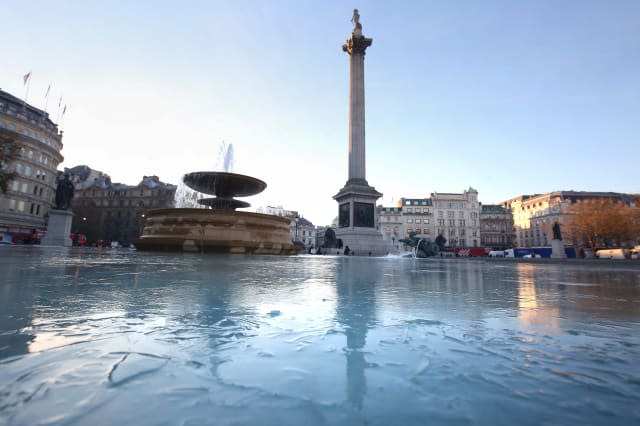It's freezing! Will cold snap cause a financial disaster?

In case you haven't left the house in a while, we can confirm that it's a bit parky out, and while it makes everyday things harder - like being able to feel your own fingers, or leave the house without putting on every single item of clothing you own - it can also spell disaster for your finances.
See also: SSE commits to freezing household energy prices until April 2017
See also: Energy bill payments struggle for third of working families, says uSwitch survey
See also: In case of emergency: prices hiked 117%
According to AXA Insurance, home insurance claims increase by 26% in the months between November and February, so it's important to take steps to protect your home from the cold.
Damage
1. Don't go too low
If you have a thermostat, make sure it is set to stop the house getting too cold. If not, it's worth setting the heating to come on every so often, so that when you're out, the house doesn't get too cold. Simon Stanney, General Insurance Director at SunLife explains that if you do let the house get cold, and the put the heating on for a blast of warmth, you risk any frozen pipes thawing too quickly and bursting. Less dramatically, it can also cause condensation, which can lead to damp on ceilings and walls.
2. Prepare your pipes
One of the most common winter problems is frozen and burst pipes; you can reduce this risk by ensuring all your water pipes are well insulated. You should also fix any dripping taps because a small trickle of water, particularly from an outdoor tap, can freeze and completely block the pipe.
Bills
It's not just winter damage that can prove expensive, the cost of heating your home can be ruinous too.
3. Shop around for a cheaper deal
Don't be swayed by the companies offering to fix their standard tariffs over the winter, shopping around for a cheaper tariff from a smaller player could save you significant sums over the winter months.
4. Keep the warmth in
Once your home is warm, don't let the heat escape! Almost 25% of heat is lost via poorly insulated roofs. Invest in insulation - it is cheap and effective. Also watch out for draughts around doors (keyholes, letter boxes, gaps in doors and windows). Draught excluder packs are available from most DIY stores.
Cars
And it's not just your home that can be expensive in the cold. Claims on car insurance rise by 12% between November and February too, so we need to keep our cars safe too.
5. Drive carefully
The car insurance claims season kicked off last Friday, and are expected to be 10% higher this Friday. The peak is caused by a combination of the volume of traffic on the roads for Christmas shopping season, slippery roads, and foggy or frozen windows. It's vital that we take the time at this point in the year to drive at a sensible speed for the road conditions, and prepare the car carefully before we set off.
6. Defrost carefully
The AA says there has been a spike in the number of cars that have disappeared off the drive while they were being defrosted. Michael Lloyd, the AA's insurance director, says that in most cases the driver has started the car to allow it to warm up with the engine ticking over and the heaters and demisters on, while they pop back indoors to finish a cup of tea and get their things ready for the morning commute. "All the thief has to do is jump in the car and drive it off," he says.
"Unfortunately for the owner, it is highly unlikely that any insurer will pay out for a car stolen in this way. Every insurance policy includes a 'duty of care' on the part of the car's owner which means that they should not do anything that could avoidably lead to loss or damage and this falls squarely into that category. Most will also include specific terms excluding claims where keys were left in the car. So if you are going to waste your costly fuel by warming it up using the engine, you must remain with it all the time."
Jyoti Bird from AXA Insurance suggests that you use the de-icing time to sit in the car and write a 'to do' list for the day. A cheaper solution is to cover the windscreen with an old blanket or cardboard so frost can't get to it, and clear frosted withdraws with de-icer and a scraper.
7. Check if breakdowns are covered
Batteries and engines are more likely to freeze in the cold, so breakdowns are soaring. In recent years car insurers have been more likely to offer car breakdown cover as part of the package, but if you have been relying on this, it's essential to check your policy.
Defaqto says that in the past year, insurers have increasingly moved from offering it as standard, to offering it as an extra you can pay for (53% up from 47% a year ago). Brian Brown, Head of Insight at Defaqto, said: "At this time of year it is important to remember that breakdowns are more common and potentially more hazardous. Most insurance companies offer breakdown cover as an add-on, or not at all, so we would advise drivers not to presume that they will be covered."




